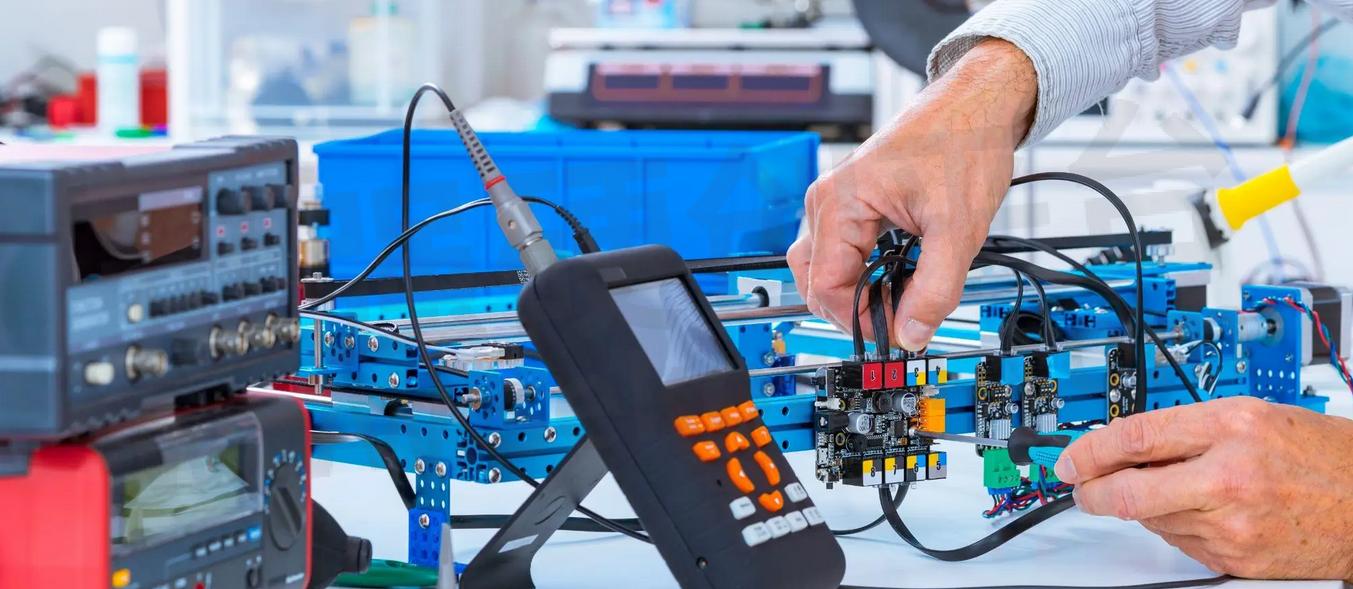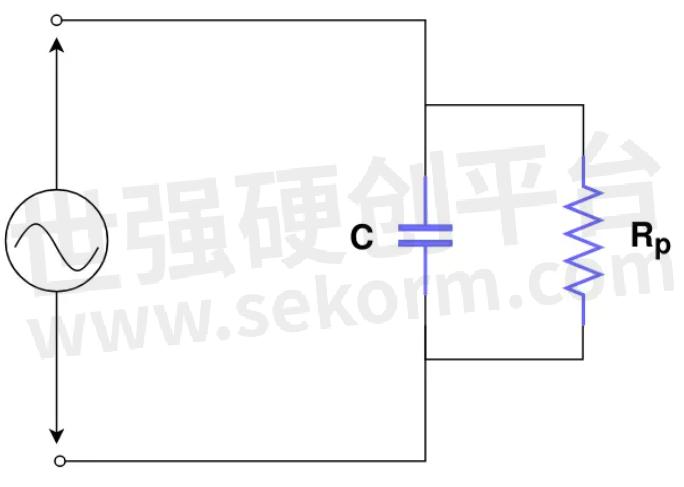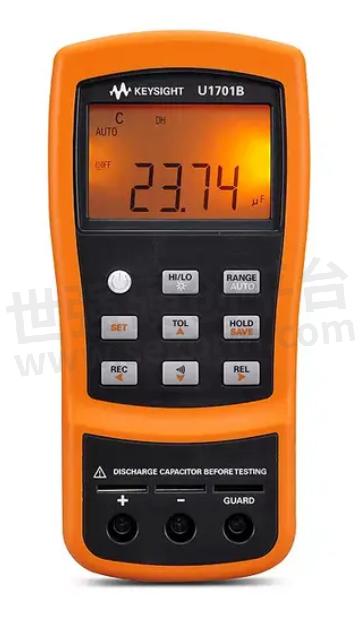Keysight‘s Capacitance Meter: A Useful Instrument on a Test Engineer‘s Desk


A capacitor is like caffeine for electronic circuits and electrical equipment — it keeps them awake and running smoothly by providing quick jolts of energy whenever it's needed. Capacitors are the energy reservoirs that supply bursts of power to maintain consistent operation during transient demands. To accurately measure capacitors, we use Capacitance Meters.
In this article, understand where capacitance meters are used, what their capabilities are, and how they're used to measure components and diagnose problems.
What is a capacitance meter?
A capacitance meter is a device to measure the capacitances, as well as related parameters, of:
●discrete capacitors (electrolytic capacitors as well as ceramic and tantalum ones)
●surface mount device (SMD) capacitors
●circuits
●active and passive components like diodes and integrated circuits
They can measure these components and circuits under both alternating current and direct current (AC/DC) signals.
Capacitance is the ability to store electrical energy in electric fields formed by the build-up of electric charges. The unit of capacitance is a farad which is the amount of capacitance that can store one coulomb of electric charge when charged to a potential difference of one volt. The farad is a very large unit of energy storage when it comes to practical applications; most real-world capacitances are of the order of microfarads (µF, a millionth of a farad), nanofarads (nF, a billionth of a farad), or picofarads (pF, a trillionth of a farad pF).
What are some industrial applications of capacitors and capacitance meters?

Capacitors are ubiquitous in electronic circuits and devices as well as electrical appliances and heavy-duty equipment. You'll be hard-pressed to find a device without one.
Any industry where capacitors are used for the following applications benefits by including capacitance meters in its test equipment:
●Signal filtering in power supplies: Capacitors help smooth out the fluctuations in a signal. In power supplies, for example, capacitors filter out the ripple in a rectified signal to produce a stable direct current (DC) output.
●Capacitive coupling: Since capacitors act as open circuits for DC signals, they are used to couple two stages of a circuit by allowing alternating current (AC) signals to pass through while blocking their DC components. This is common in audio and radio frequency circuits to remove DC offsets.
●Signal denoising for active components: Capacitors are placed across the power supply lines of active devices like transistors and integrated circuits to decouple them from the power supply. They shunt noise or transient signals to ground and stabilize the voltage supply to the devices.
●Circuit tuning: In resonant circuits, such as oscillators and filters, capacitors are combined with inductors to set the resonant frequencies of the circuits or define the cutoff frequencies of filters. These are the frequencies at which the circuits will either be most or least responsive.
●Circuit timing: Since capacitors charge and discharge at a rate determined by the resistance (or impedance) they are paired with in a circuit, we can use them to create precise delays or to shape the waveforms of signals.
●Motor starting: In single-phase AC motors, capacitors are used to create a phase-shifted current that provides the necessary starting torque (start capacitor) or improves efficiency and running conditions (run capacitor).
●Energy storage: Since capacitors can store and release energy quickly. In AC circuits where the direction of current regularly reverses, the capacitors release energy during the part of the cycle when the power supply voltage is lower than the stored voltage in the capacitor, thus providing additional current to the load.
●Power factor correction: In industrial and other heavy-duty AC power systems, particularly ones that run inductive loads, the phase difference between the voltage and the current waveforms results in wasted energy. Businesses end up paying for excess power that didn't do any useful work. Capacitors solve this problem by reducing the phase difference. This improves energy efficiency and also reduces the load on the electric utility.
While all these use cases are common across a broad range of verticals, some uses stand out:
●Electric vehicles: Current electric battery technology achieves high energy density for long-term energy storage but moderate power density, which limits the ability to deliver a lot of power quickly. Combining batteries with supercapacitors enables high power densities as well.
●Power factor correction in industries: Heavy industries use banks of high-precision large capacitors to compensate for the lagging power factor and improve their energy efficiency.
●Power factor correction in data centers: Power generators and cooling equipment can result in lagging power factors. Power factor correction using capacitors helps alleviate the problem.
●Space applications: High-precision capacitors have been used in critical space applications. For example, the James Webb Space Telescope's infrared cameras are cooled to very low temperatures to reduce sensor noise. Capacitors are essential components of their space cryocoolers and analog-to-digital converters.
Which parameters do capacitance meters measure?
Capacitance meters measure the following parameters:
●capacitance measured using the series equivalent circuit model (Cs)
●capacitance measured using the parallel equivalent circuit model (Cp)
●quality factor (Q)
●dissipation factor (D), which is just the inverse of the quality factor
●equivalent series resistance measured using the series equivalent circuit model (Rs)
●equivalent parallel resistance measured using the parallel equivalent circuit model (Rp)
To understand these, we must first understand what parasitic losses are and how they are analyzed using equivalent circuit models.
What are equivalent series and parallel circuit models?
An ideal capacitor has only capacitance with zero resistance or inductance. However, no real-world capacitor behaves ideally. The construction and material properties of the component result in resistive and inductive losses. At higher frequencies, these parasitic losses become significant and affect the circuit's behavior.
To analyze and measure these losses, we can treat the component as an ideal capacitor and its losses as separate ghost resistors and inductors. Further, we can consider them in different circuit models depending on the goal of the analysis.

In a series equivalent circuit model like the one shown above, the resistive and inductive losses are treated as distinct elements in series with the capacitor. The effective resistance — which represents the net resistive losses from the resistance of the dielectric material, the leads, the plates, and the connections — is called the equivalent series resistance (ESR or Rs). Similarly, the inductance of the imaginary inductor (which represents inductive losses due to the current paths inside the capacitor owing to its construction) is called the equivalent series inductance (ESL).

In a parallel equivalent circuit model like the one shown above, an additional resistive loss due to the leakage of current across the dielectric is treated as a distinct resistor in parallel with the capacitor. The resistance of the imaginary resistor is called the equivalent parallel resistance (EPR or Rp).
What are quality factor and dissipation factor?
Under an AC signal, the net impedance of the component to the flow of alternating current depends on both its reactance (which changes with frequency) and resistance. The quality factor, Q, is the ratio of the capacitor's reactance to its ESR.
A high quality factor at any frequency results in low losses and brings the component closer to an ideal capacitor. Higher Q factors are desirable in applications like radio frequency (RF) circuits and resonant circuits, where minimal energy loss is critical.
The dissipation factor, D, is the inverse of the quality factor. Low dissipation factors are ideal.
Why do you need capacitance meters when digital multimeters are available?
Engineers must be able to measure the parasitic losses explained above. Capacitance meters are able to measure capacitances and equivalent resistances at different input frequencies with high precision.
ESR is especially important because when it grows large over time, it leads to equipment failures. Measuring it is crucial when verifying the quality of components and troubleshooting faulty circuits.
Unlike a capacitance meter, a digital multimeter typically measures the capacitance only under a constant DC signal and can't measure parasitic elements like ESRs.
That's why capacitance meters are essential capacitance measurement devices that belong on every test engineer's desk.
How do capacitance meters compare with LCR meters?
Inductance, capacitance, and resistance meters, or LCR meters, are also capable of measuring capacitance. In addition, they can measure the net impedance of a component or circuit, the impedance of a component, and net resistance, including resistive and inductive losses using the equivalent circuit models.
How do you accurately measure capacitance with a benchtop capacitance meter?
Handheld capacitance meters are great instruments for most day-to-day testing and verification work. However, when a project demands the highest quality standards, benchtop capacitance meters and LCR meters offer much better accuracy.
The recommended technique to accurately measure the capacitance using benchtop meters involves four test leads instead of two:
1. Hpotential
2. Lpotential
3. Hcurrent
4. Lcurrent
The two current test leads measure the current flow across the device under test (DUT). This is the current that's able to flow under the net impedance of the DUT, which includes the ESR, ESL, and EPR.
Meanwhile, the other two test leads are connected immediately before and after the DUT, enabling it to measure the potential difference of just the device without inadvertently measuring the voltage drops across the parasitic elements.
After connecting, set the frequency range at which you want to measure all the parameters. Some standard frequencies include:
●120 Hz
●1 kHz
●1 MHz
Most modern devices tend to be digital capacitance meters. Normally, you have to set the range of the unknown capacitance manually, and the meter will either report a value or warn that it's outside the range.
In contrast, an auto-ranging capacitance meter works by measuring the capacitance and then systematically stepping through the ranges to see which range is most relevant for the digital reading produced by its analog-to-digital converter for the sensed analog level.
Quality assurance with Keysight capacitance meters

In this article, we gave an overview of capacitance meters, what they measure, and why you should use them.
Keysight's handheld and benchtop capacitance meters, LCR meters, and other impedance measurement products like impedance analyzers enable engineers to measure a variety of components and in-circuit behaviors throughout the product design and manufacturing cycle.
Keysight's products come with high digits of precision and convenience features like dual LCD displays with backlights.
Keysight also offers expert calibration services for all your test equipment and long-term warranties on all our products.
- +1 Like
- Add to Favorites
Recommend
- Ultra-low Capacitance TVS TEP0502TWL With Typical Capacitance of 0.2pF Only Protects Two High-speed Data Lines
- ESD Protection Diode ESDSLVU2.8-4-H, Features Integrated Low Capacitance Compensation Diodes that Reduce the Typical Capacitance to 2pF Per Line
- METZ CONNECT Offers Customizable Smart Cabling Solution for Intelligent Meter Systems
- Modem is Used for Water and Electricity Remote Wireless Meter Reading
- LTE Modem Remote Intelligent Meter Reading Solution
- Application of Serial to Ethernet Converters In Collecting Electricity Meter Data
- The Gas Meter Reading Application of RF Module RF4463Pro from G-NiceRF Saves Much Person Resource
- Renesas RL78/I1C MCUs Are Used for Smart Meter with Advantages of Ingle-chip Solution for Low Power Consumption and Reduced System Cost
This document is provided by Sekorm Platform for VIP exclusive service. The copyright is owned by Sekorm. Without authorization, any medias, websites or individual are not allowed to reprint. When authorizing the reprint, the link of www.sekorm.com must be indicated.






























































































































































































































































































































































































































































































































































































































































































































































































































































































